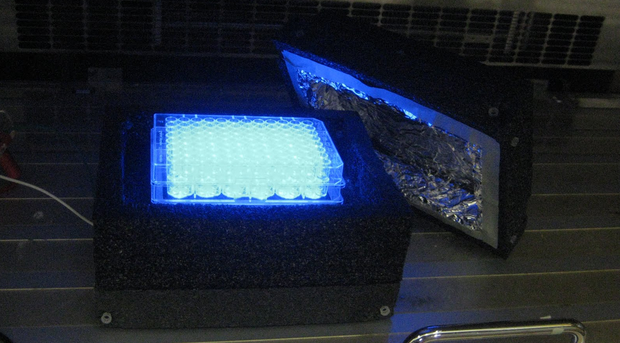Team:Heidelberg/Project/LOV/inductionBox
From 2014.igem.org
– probably the easiest one of all
ABSTRACT
The funny thing about optogenetics is that every lab has its own way of illuminating samples, be it in a box, a shelve, tubes, a whole incubator or whatsoever. This of course inspires creativity and ingenuity, but it also implies that everybody needs to start from scratch when using such a device.In the following, we therefore describe the process of construction as well as rough instructions on how to built our box.
A photo-induction box was constructed using blue LEDs (light emitting diodes) and foamboard obtained from garbage.
The device was designed such that a each well of a 24-well plate is fully covered by the light-conus of one LED. When using glass-bottom microscopy plates this should enable the simultaneous induction (or not-induction) at different intensities and an easy readout in one single flow cytometry assay. Alternatively, a separate plate can be wrapped in aluminium foil to keep it in the dark.
Contents |
General Data
- Wavelength: 460-470nm
- Voltage: 10-14V
- Format of cultures: Best used with 24-well plates (3ml per well)
- Rough dimensions: a small shoebox
List of materials used
- 24x LEDs from highlight-led.de (No. 75000001;50), LED 5mm wasserklar blau 12.000mcd 20°, 460-470nm 2.9-4.0V 20-30mA
- foambord (dark colour in order to prevent light from shining through)
- 96-well plate
- Aluminium foil (to maximise irradiation through reflection inside the box and to prevent influence from the outside)
Construction
Cultures of up to 3ml can easily be induced in 24-well plates, 96-well plates should also be possible. Such plates can be stacked upon each other, which provides a tight fixation on the induction surface. This even allows for shaking the whole box for long times and at high rpm without the plates moving out of place. In addition, several plates can be used as spacers to adjust light intensity.
Performance
The box was tested at room temperature (~22°C) and in the incubator at 37°C. No extensive heating was observed. The longest time of illumination was 12 hours continuously. The maximum shaking was 180rpm for around 1 hour.
 "
"






